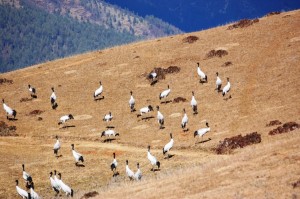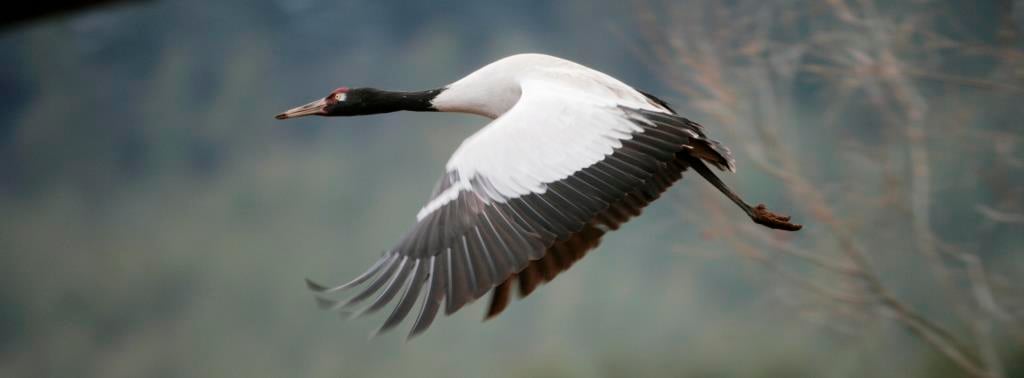Revered and deeply respected in Bhutan, the Thrung Thrung Karmo not only flies around Phobjikha valley but also in Bhutanese folklore and in Bhutanese song and dances. Sadly, today, it has flown straight into the list of vulnerable species.
Currently, the population of the black-necked-crane – standing at an average height of 1.5 meters and weighing approximately 5.35 kilograms – is estimated at 5,000 worldwide. Degradation of their habitat where wetlands are extensively affected by human activities, unplanned development, and the use of chemical fertilizers in farms are the main threats facing the birds.
As an advocacy measure to highlight the conservation of the cranes, the black-necked-crane festival was initiated by the Phobjika community with assistance from the Royal Society for Protection of Nature (RSPN) in 1998. The festival has now turned into an annual event drawing crowds from near and afar.

The RSPN has also undertaken trans-boundary migratory study of the ‘heavenly’ birds in collaboration with the International Crane Foundation. Since 1998, with effective measures in place to preserve and protect the birds, there has been a steady increase in its population over the years. From a total of 200 cranes spotted in Bhutan in the early 90s, the figures today have almost doubled. Phobjika valley, where the cranes flock during their migration from Tibet and India, is a picture postcard setting for conservation efforts in Bhutan with about 800 households living without electricity in their bid to preserve and protect the black-necked-crane. The valley and its inhabitants have become a leading example of harmonious co-existence. Phobjika valley is now more of a living museum, inviting applause from people all over the world.
Living without a basic amenity like electricity, the villagers were content with whatever little solar energy they could harness. Then in June 2011, the Rural Electrification Project with a cost of Nu 1.6 million Euros came as a blessing to the households in the valley. The Austrian Development Cooperation, Bhutan Power Corporation, Ministry of Economic Affairs and the RSPN worked together to provide electricity to the Phobjika region. An underground electrification system, that costs much more than the conventional process has been put in place in order to preserve the crane habitat areas and not disturb them in any way.



